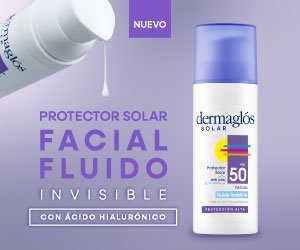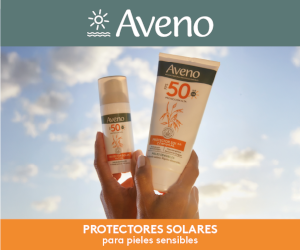Restrospective study of 25 patients with DRESS syndrome
DOI:
https://doi.org/10.47196/da.v29i2.2452Keywords:
adverse reaction to drugs, DRESS, pharmacodermaAbstract
DRESS syndrome is an acronym for drug reaction with eosinophilia and systemic symptoms, it is considered a rare and severe disease characterized by the presence of eosinophilia that comes with exanthema, facial edema, fever, lymphadenopathy, and liver compromise. It typically has a long evocative delay time. The medicines commonly involved are anticonvulsants, allopurinol, and antibiotics. Treatment consists of suspending the associated medication and, depending on the severity of skin and internal organ involvement, the use of corticosteroids. We conducted a descriptive, retrospective, and observational study of 25 clinical cases diagnosed with DRESS syndrome who were admitted to the Dr. Federico Abete Trauma and Emergency Hospital between June 2013 and November 2022. Clinical characteristics, drugs involved, and required treatment are described. Finally, a bibliographical review of the subject was developed. The search engines used were: Medline, Lilacs, Clinicalkey and Google Scholar.
References
I. Gómez M, Corrales T, Ugalde O. Síndrome de DRESS: Abordaje diagnóstico y terapéutico. Rev Med Sinergia. 2019;4:60-72.
II. Saltzstein S, Ackerman L. Lymphadenopathy induced by anticonvulsant drugs and mimicking clinically pathologically malignant lymphomas. Cancer. 1959;12:164-182.
III. Bocquet H, Bagot M, Roujeau JC. Drug-induced pseudolymphoma and drug hypersensitivity syndrome (drug rash with eosinophilia and systemic symptoms: DRESS). Semin Cutan Med Surg. 1996;15:250-257.
IV. Descamps V, Rager S. Síndrome DRESS. EMC Dermatología. 2016;50:1-9.
V. Cabañas R, Ramírez E, Sendagorta E, Alamar R, et ál. Spanish guidelines for diagnosis, management, treatment, and prevention of DRESS syndrome. J Investig Allergol Clin Immunol. 2020;30:229-253.
VI. Husain Z, Reddy BY, Schwartz RA. DRESS syndrome: Part I. Clinical perspectives. J Am Acad Dermatol. 2013;68:693.e1-1.
VII. Kardaun SH, Sidoroff A, Valeyrie L, Halevy S, et ál. Variability in the clinical pattern of cutaneous side-effects of drugs with systemic symptoms: does a DRESS syndrome really exist? Br J Dermatol. 2007;156:609-611.
VIII. Hidalgo I, La Forgia M, Noguera M, Papale R, et ál. Guías de evaluación, diagnóstico y tratamiento de las reacciones adversas cutáneo mucosas graves más frecuentes. Grupo de trabajo de reacciones adversas a fármacos de la Sociedad Argentina de Dermatología. Rev Soc Arg Dermatol. 2020;1:21-28.
IX. Laurence V, Obeid G, Revuz J. Reacciones a fármacos. En: Bolognia J, Shaffer J, Cerroni L. Dermatología. Madrid: Elsevier; 2019:348-374.
X. Echeverria M, Torres A, Riganti J, Mazzuoccolo L. Reacción a fármacos con eosinofilia y síntomas sistémicos (DRESS). Dermatol Argent. 2022;28:3-13.
XI. Haur Y. Drug reaction with eosinophilia and systemic symptoms (DRESS). En: Mockenhauy M, Corona R, ed. UpToDate 2022. Disponible en: https://www.uptodate.com/contents/drug-reaction-with-eosinophilia-and-systemicsymptomsdress/print?search=DRESS&source=search_result&selectedTitle=1~150&usage_type=default&display_rank=1. [Consultado septiembre 2022].
XII. Shiohara T, Mizukawa Y. Drug-induced hypersensitivity syndrome (DiHS)/drug reaction with eosinophilia and systemic symptoms (DRESS): An update in 2019. Allergology international: official journal of the Japanese Society of Allergology 2019;68:301-308.
XIII. Fernández M, Ramírez A, Guerrero I, López. A. Síndrome DRESS. Dermatol Rev Mex. 2018;62:522-528.
XIV. Ocampo J, Ocampo S, Martínez J, Barbosa L, et ál. Reacción por drogas con eosinofilia y síntomas sistémicos (síndrome de DREES). Estudio retrospectivo de nueve casos. Rev Med Chile. 2015;143:577-583.
XV. Lin IC, Yang HC, Strong C, Yang CW, et ál. Liver injury in patients with DRESS: A clinical study of 72 cases. J Am Acad Dermatol. 2015;72:984-991.
XVI. Husain Z, Reddy BY, Schwartz RA. DRESS syndrome: Part II. Management and therapeutics. J Am Acad Dermatol. 2013;68:718-720.
Downloads
Published
Issue
Section
License
Copyright (c) 2023 on behalf of the authors. Reproduction rights: Argentine Society of Dermatology

This work is licensed under a Creative Commons Attribution-NonCommercial-NoDerivatives 4.0 International License.
El/los autor/es tranfieren todos los derechos de autor del manuscrito arriba mencionado a Dermatología Argentina en el caso de que el trabajo sea publicado. El/los autor/es declaran que el artículo es original, que no infringe ningún derecho de propiedad intelectual u otros derechos de terceros, que no se encuentra bajo consideración de otra revista y que no ha sido previamente publicado.
Le solicitamos haga click aquí para imprimir, firmar y enviar por correo postal la transferencia de los derechos de autor













